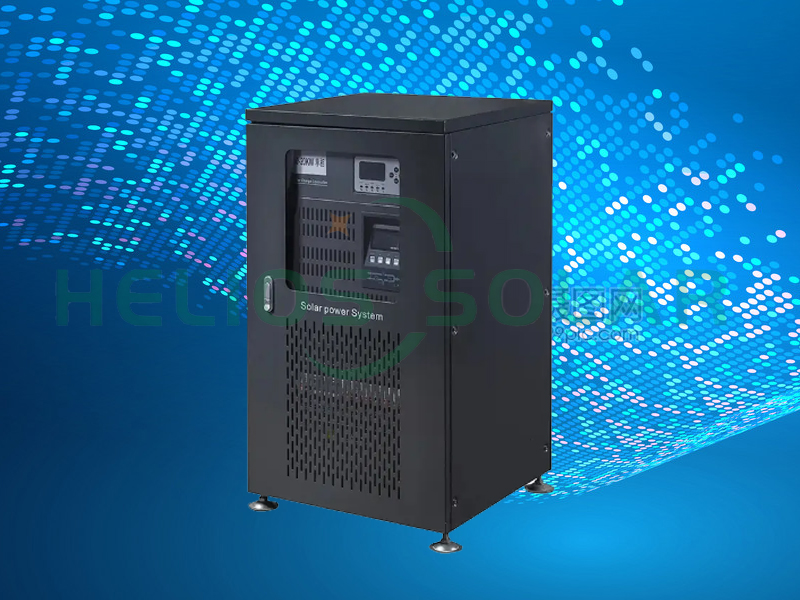As the world increasingly turns to renewable energy, solar energy has become a front-runner in the search for sustainable energy solutions. Solar inverters are at the heart of a solar system’s efficiency and effectiveness, playing a vital role in converting direct current (DC) generated by solar panels into alternating current (AC) that can be used by homes and businesses. With the development of technology, driven by technological progress, changes in market demand, and global sustainable development, the future development direction of solar inverters will undergo major changes.
Role of solar inverters
Before delving into future developments, it is necessary to understand the basic role of a solar inverter. They are often referred to as the “brains” of a solar power system. In addition to converting DC power to AC power, solar inverters optimize the performance of solar panels, monitor energy production, and disconnect the system for safety in the event of a fault. As solar applications grow, the need for more efficient, reliable, and smart inverters becomes increasingly important.
Trends shaping the future of solar inverters
1. Improve efficiency
One of the main goals for the future development of solar inverters is to increase their efficiency. Current inverter technology typically has efficiencies between 95% and 98%. However, ongoing research and development aims to push these boundaries further. Innovations such as multi-level inverters and advanced control algorithms are being explored to minimize energy losses during conversion. The higher the efficiency, the more energy a solar panel can harness, making solar installations more economically viable.
2. Smart Inverter
The rise of smart technology is revolutionizing every industry, and solar inverters are no exception. Smart inverters are equipped with advanced communication capabilities that enable them to interact with other devices and systems. This connectivity enables real-time monitoring, remote management and data analysis, giving users insights into their energy consumption and production. As smart grids become more common, the integration of smart inverters is critical to optimize energy distribution and enhance grid stability.
3. Energy Storage Integration
The future of solar inverters is closely tied to the development of energy storage solutions. As battery technology advances, the ability to store excess energy generated during the day for use at night or during peak demand periods is becoming increasingly feasible. Hybrid inverters that can manage solar generation and battery storage are gaining traction. This integration not only maximizes the use of solar energy, but also provides users with greater energy independence and the ability to withstand grid outages.
4. Grid Support and Stability
As more renewable energy sources are integrated into the grid, maintaining grid stability becomes a challenge. Future solar inverters will need to play a more active role in grid support. This includes functions such as voltage regulation, frequency control and demand response. By providing these services, solar inverters can help balance supply and demand, ensuring a stable and reliable supply of energy. In this regard, it is crucial to develop inverter technology that can dynamically respond to grid conditions.
5. Modular and scalable design
The demand for solar energy systems continues to grow, as does the need for flexible and scalable solutions. Future solar inverters are likely to have a modular design that can be easily expanded and customized according to the specific needs of the user. This approach not only simplifies installation but also reduces costs, making solar energy more accessible to a wider audience. Modular inverters can be easily upgraded or replaced, ensuring users can keep pace with technological advances without having to overhaul the entire system.
6. Enhanced Security Features
Safety is crucial to any electrical system, and solar inverters are no exception. Future developments are likely to focus on enhanced security features to protect users and the grid. Innovations such as arc detection, rapid shutdown capabilities and advanced fault protection mechanisms will be integrated into inverter designs. These features not only comply with evolving safety regulations, but also increase user confidence and encourage wider adoption of solar technology.
7. Reduce costs
As with any technology, cost remains a significant barrier to widespread adoption. The future of solar inverters is likely to continue with the trend of reducing costs through economies of scale, improved manufacturing processes, and the use of cheaper materials. As the solar market expands, competition among manufacturers will drive down prices, making solar installations more economically attractive to consumers and businesses alike.
In conclusion
Driven by technological advancements and the growing demand for renewable energy solutions, the future direction of solar inverters will be transformative. As efficiency increases, smart technologies become more integrated, and safety features are enhanced, solar inverters will play an increasingly important role in the global energy landscape. By embracing these trends, the solar industry can continue to innovate and provide sustainable energy solutions to meet the needs of a changing world. Looking to the future, it is clear that solar inverters will be critical not only for harnessing the power of the sun, but also for shaping a more sustainable and resilient energy future.
Post time: Sep-27-2024


